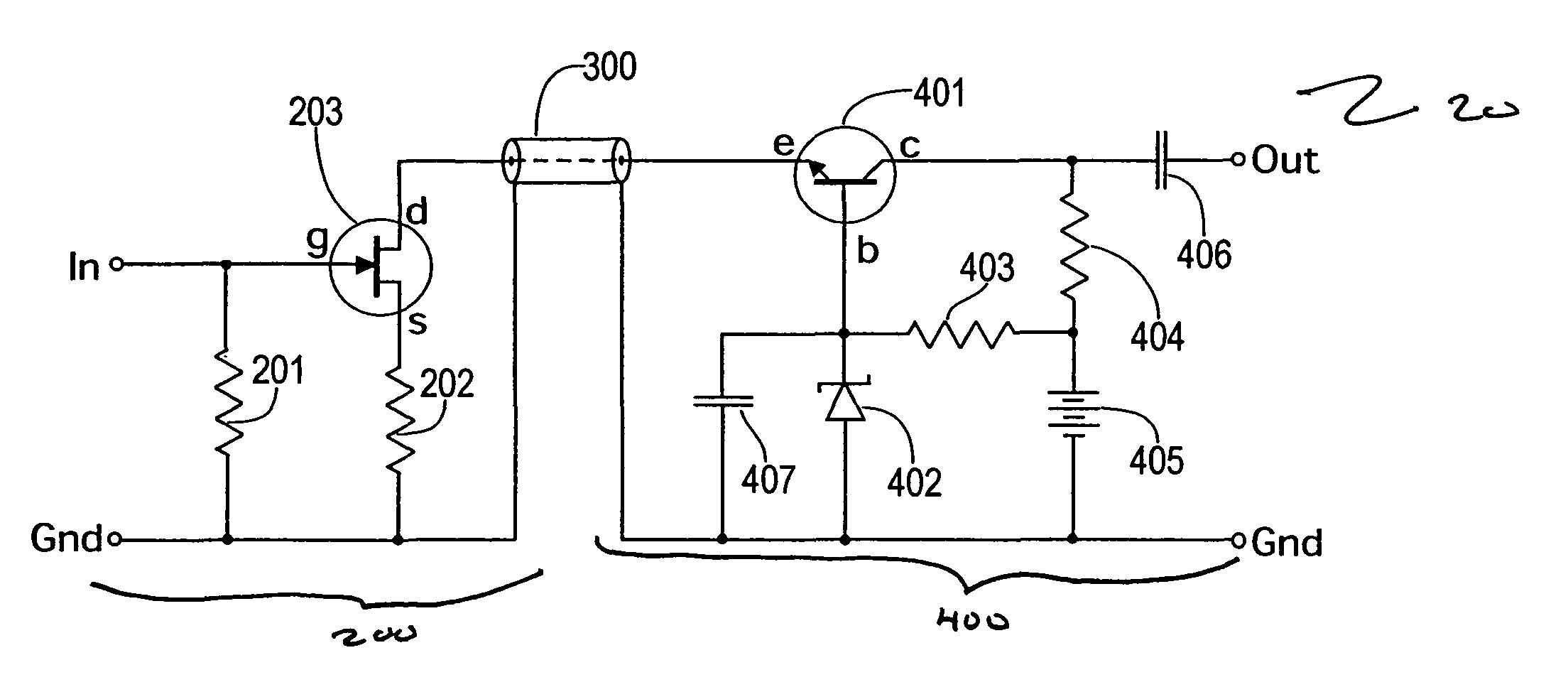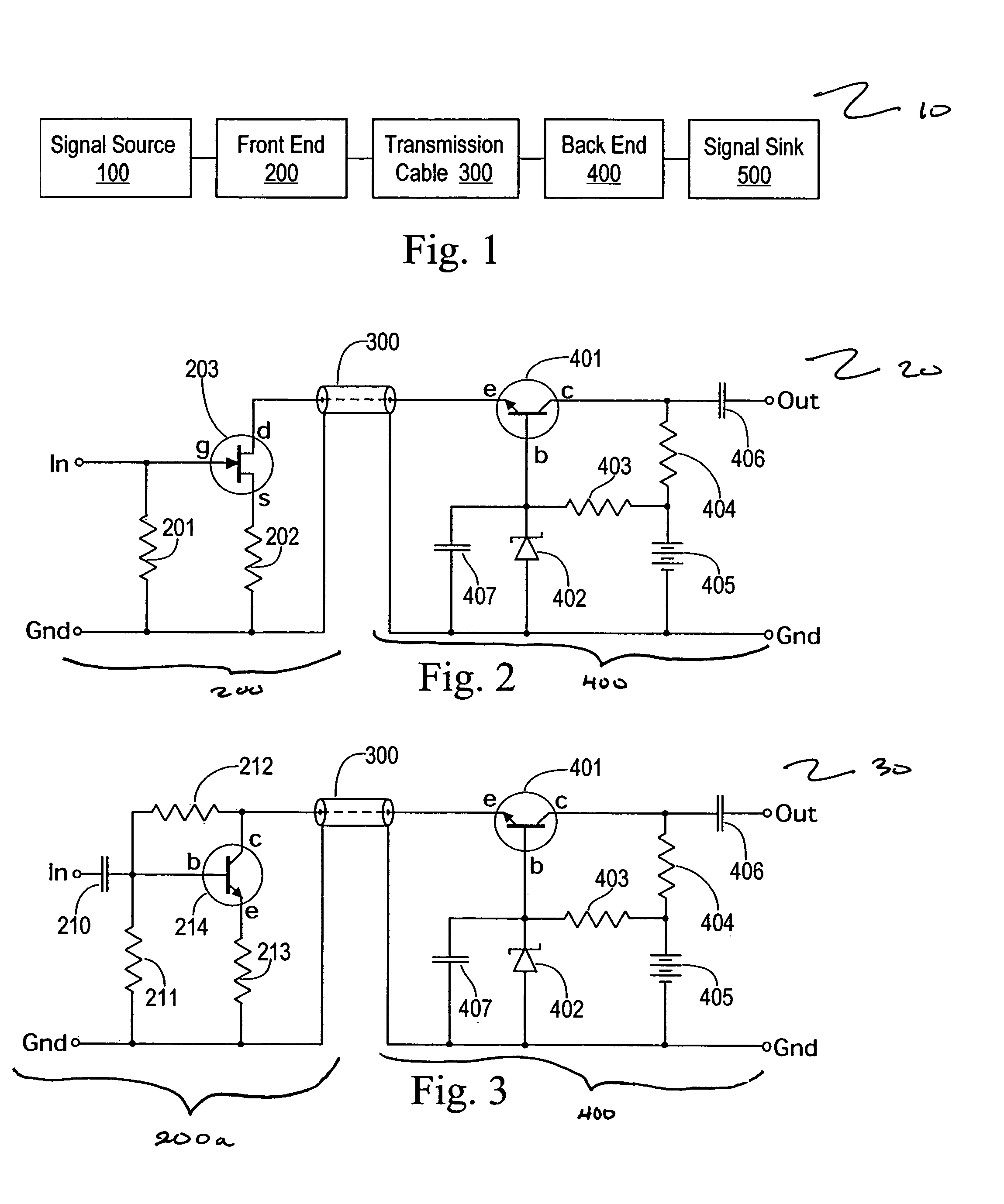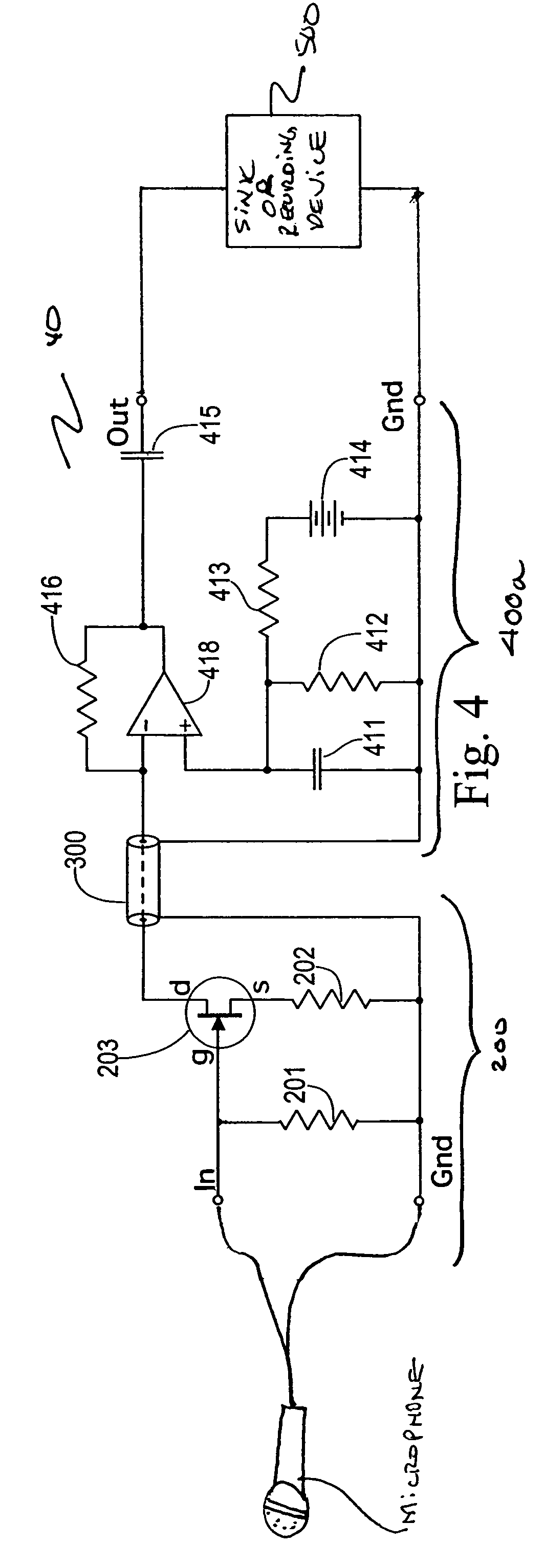Split cascode line amplifier for current-mode signal transmission
a current-mode signal and cascode line technology, applied in the direction of waveguide type devices, gain control, pulse technique, etc., can solve the problems of cable self capacitance, signal carried by the cable is attenuated and distorted, and achieves low cost, low cost and strength. , the effect of high physical strength
- Summary
- Abstract
- Description
- Claims
- Application Information
AI Technical Summary
Benefits of technology
Problems solved by technology
Method used
Image
Examples
Embodiment Construction
[0028]FIG. 1 is an exemplary schematic block diagram of a split-cascode line amplifier 10 in accordance with the invention. As shown in FIG. 1, a signal originates in the signal source 100. The signal is supplied to the front end 200 and flows through the transmission cable 300 and the back end 400, and terminates in the signal sink 500.
[0029]In the contemplated embodiments of the invention, any source of signals can be used as the signal source. In certain embodiments, the signal source is a transducer. In the preferred embodiment, the signal source 100 is a microphone, an electromagnetic or piezoelectric transducer on a musical instrument, an accelerometer, a low-frequency radio antenna, a hydrophone, a geophone, or the like.
[0030]In conventional systems, the front end 200 can be a voltage amplifier, a transformer, or both, or it can be omitted. In this case, the signal source 100 is connected directly to the transmission cable 300. In accordance with the exemplary embodiments of ...
PUM
 Login to View More
Login to View More Abstract
Description
Claims
Application Information
 Login to View More
Login to View More - R&D
- Intellectual Property
- Life Sciences
- Materials
- Tech Scout
- Unparalleled Data Quality
- Higher Quality Content
- 60% Fewer Hallucinations
Browse by: Latest US Patents, China's latest patents, Technical Efficacy Thesaurus, Application Domain, Technology Topic, Popular Technical Reports.
© 2025 PatSnap. All rights reserved.Legal|Privacy policy|Modern Slavery Act Transparency Statement|Sitemap|About US| Contact US: help@patsnap.com



